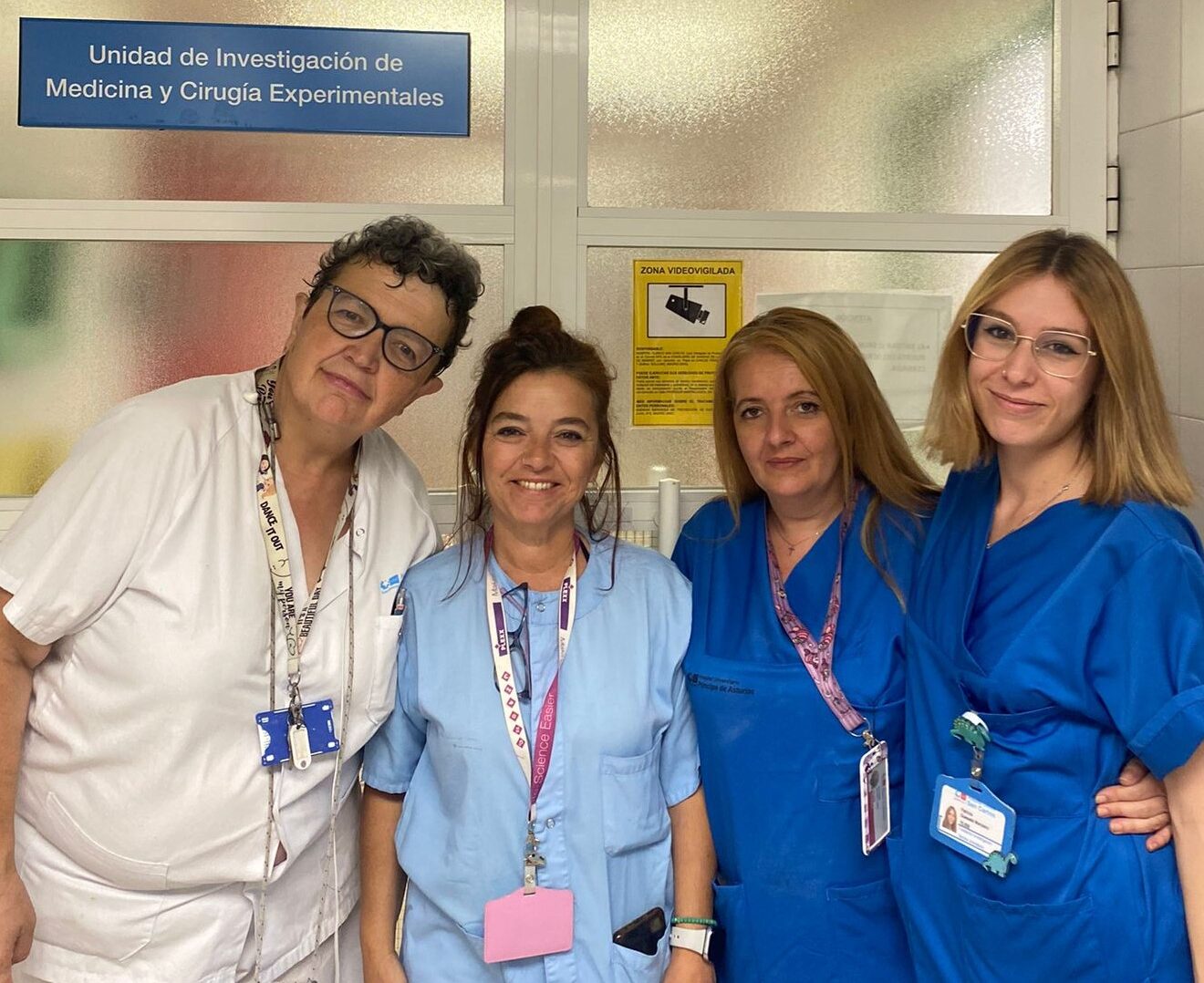
The Medicine and Experimental Surgery Unit was inaugurated in December 1995. It is a structure made up of personnel, space and equipment dedicated to the development of research and teaching projects. The group formed by the UMECE staff (research and support staff) allows the work to be coordinated and carried out in a comfortable environment, which facilitates teamwork, sharing projects and concerns.
The research support staff consists of two veterinarians (one veterinary practitioner with B, C, D1, D2 and D2 approvals, and one veterinary doctor with A, B, C approvals and d, e, f functions), an animal technician with a, b, c functions, a keeper with a, b functions, a nursing care technician (T.C.E.) and a cleaner. All substitute keepers have a, b training for working with experimental animals.
The research staff is located in six laboratories with different lines of research, a cell culture room, two experimental operating rooms with microsurgical microscopes, a room with an infrared scanner for Western blot, a histology scanner, an animal house and a common room with computers for the use of all unit staff.
The operation of this department is structured to meet several objectives:
Dra. María Cruz Rodriguez-Bobada González del Campo
mrbobadagonzalezcampo@salud.madrid.orgPatricia Quesada
Gemma Martín Trillo
Paloma Peón Ruiz
Dolores Carrión Ramírez
David González Torres
Carlos Vivanco Villarejo
Nicolás Granados Díaz
Alan José Calleja Barahona
South Basement
Hospital Clínico San Carlos
C/ Profesor Martín Lagos s/n.
28040 Madrid
– Service of anaesthesia and analgesia in experimental animals.
– Washing and sterilisation of surgical and research laboratory equipment.
– In vivo imaging service in mice to detect fluorescent or luminescent cells.
– Surgical facilities:
The animal house consists of:
– Two rooms for experimental pigs.
– A quarantine room.
– Two rooms for experimental rabbits.
– One room for mice in conventional and self-ventilated racks.
– Two rooms for rats in conventional and self-ventilated racks.
– A room for genetically modified mice.
– A behavioural room.
In the animal house, the health and welfare conditions of the animals are supervised by veterinarians. All animals are provided with means of environmental enrichment: cardboard houses, polycarbonate igloos, polycarbonate wheels, burrows, curly shavings, coloured balls, etc. The personnel who care for and maintain the animals are trained in the use and care of experimental animals.
Experimental animals at UMECE are cared for every day of the year.
The Biobank is attached to 2 external committees:
Research projects using experimental animals: Submit to the Committee on Animal Ethics snd Welfare (CAEW): Revise procedure here (in Spanish).
Animal Research Projects for teaching purposes: Request written authorisation from the Director of the Fundación para la Investigación Biomédica del Hospital Clínico San Carlos.
Projects using experimental animals can only begin once authorisation has been received from the competent body (Animal Protection Department of the Community of Madrid). Authorisation by the Competent Body will be processed through the CAEW of the Hospital Clínico San Carlos.
DIRECTIVE 2010/63/EU OF THE EUROPEAN PARLIAMENT AND OF THE COUNCIL of 22 September 2010 on the protection of animals used for scientific purposes.
Royal Decree 53/2013 of 1 February establishing the basic rules applicable to the protection of animals used for experimental and other scientific purposes, including teaching.
Order ECC/566/2015 of 20 March 2015 establishing the training requirements to be met by personnel handling animals used, bred, or supplied for experimental and other scientific purposes, including teaching.
LA UMECE ON YOUTUBE